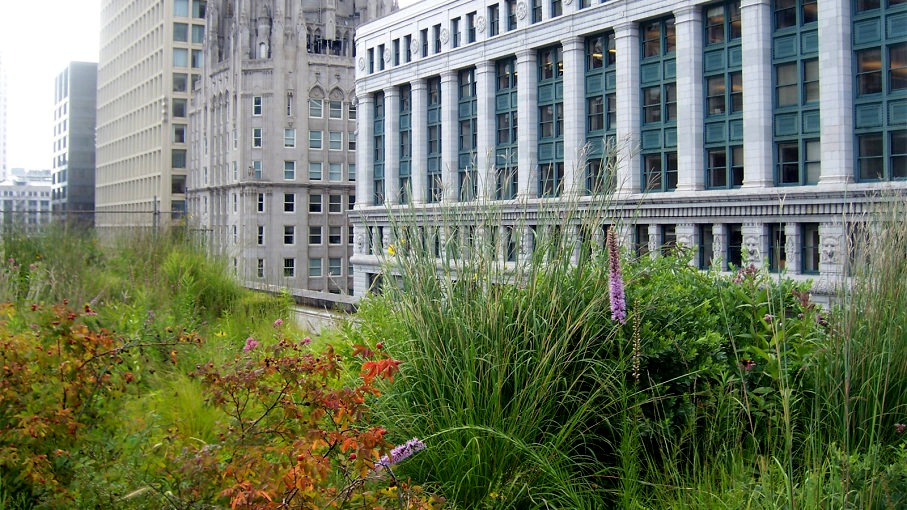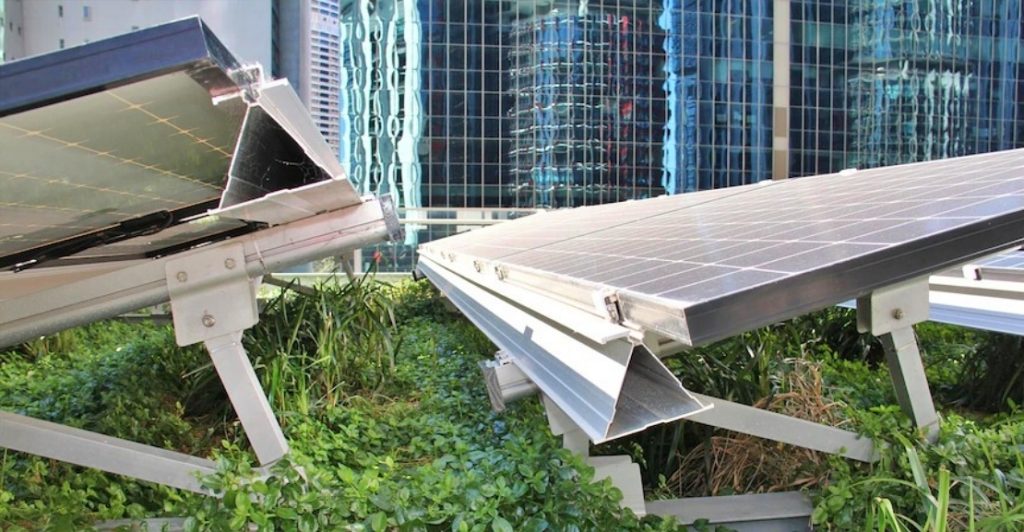Mark Jaffe of Colorado Sun writes:
CSU researchers find crops protected by solar panels yield more food while plants help cool the panels, making them more efficient at generating electricity.
At first Jennifer Bousselot was furious. Her doctoral thesis on urban rooftop plant cultivation was going to be sullied by the installation of solar panels. The site was the U.S. Environmental Protection Agency’s downtown Denver office and she had no say.
Then a funny thing happened. It turned out the plants under or next to the solar panels, benefitting from the installation’s shade, had greater total biomass, moisture content and overwintering survivability.
“We ended up with larger plants,” Bousselot said. “It was a happy accident.”
That accident — 15 years ago — set the now 46-year-old Colorado State University assistant professor of horticulture on a career researching rooftops, plants and solar. Along the way Bousselot upped the ante by growing not just any plants but crops.

The goal is to combine the building cooling and heating advantages and stormwater management benefits of a green roof with growing food and producing electricity.
“Stacking all of those benefits on relatively small spaces really got me absolutely thrilled, and so that’s what we’re trying to do,” Bousselot said.
And so, on her rooftop farm at CSU’s Spur Campus in Denver, Bousselot, who grew up on a farm in Iowa, has grown chili peppers, lettuce, cucumbers, tomatoes, onions and garlic. Carrots, spinach and arugula didn’t like it up on the roof — too hot.
While the legendary Hanging Gardens of Babylon, believed to have been constructed around 500 B.C., may be the most famous green roof, modern green roof technology has more modest beginnings in Germany in the 1960s.
The benefits of covering a roof with greenery include doubling the life of a conventional, white roof, cutting the heating and cooling costs for a building and reducing the rate of stormwater runoff up to 65%, according to a report from the federal General Services Administration.
“Research has identified green roofs as one of the best ways to address wet weather flows in urban areas with high-density development,” according to the administration, which maintains nearly 2 million square feet of green roofs on government buildings, including the Denver EPA office.
Green roofs can reduce the amount of energy a building uses for cooling in the summer and heating in the winter. A green roof can be as much as 40 degrees cooler than conventional roofs and can cut building energy use by thousands of dollars a year, according to the EPA.
 Greenroofs.comConnecting the Planet + Living Architecture
Greenroofs.comConnecting the Planet + Living Architecture










